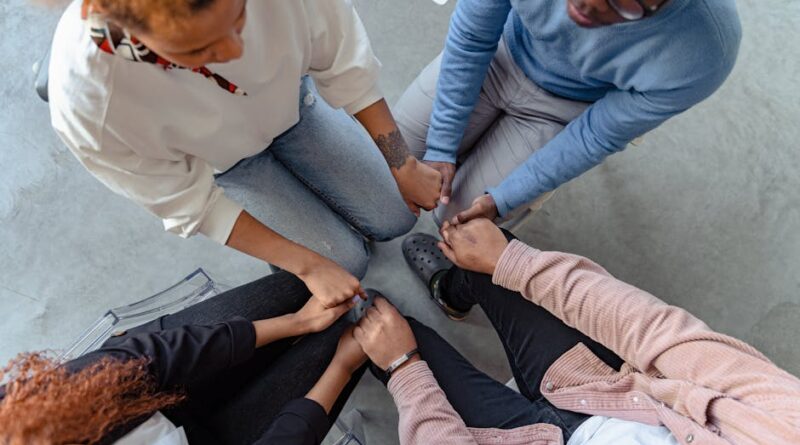Understanding the Psychology of Community Bonds
Communities are the backbone of society, providing individuals with a sense of belonging, support, and shared identity. The bonds that tie members of a community together are complex and multifaceted, influenced by various psychological factors. Understanding these community bonds is essential for creating strong, resilient, and inclusive communities. In this article, we will delve into the depths of the psychology of community bonds, exploring the intricacies of human connection, social identity, and belonging.
The Evolution of Community Bonds

Community bonds have been a fundamental aspect of human society since the dawn of civilization. In ancient times, communities were formed out of necessity for survival, with individuals banding together to hunt, gather, and protect one another. These early communities laid the foundation for the social structures that continue to shape our modern world. As societies evolved, community bonds became more intricate, encompassing shared values, traditions, and norms that bind individuals together.
One of the key psychological drivers of community bonds is the need for social connection. Humans are inherently social beings, wired to seek out relationships and form bonds with others. Research has shown that social isolation can have detrimental effects on both physical and mental health, highlighting the importance of strong community ties. When individuals feel connected to their community, they experience a sense of belonging and support that can enhance their overall well-being.
Social Identity and Community Bonds

Social identity theory, proposed by psychologist Henri Tajfel, posits that individuals derive a significant part of their self-concept from their group memberships. In the context of community bonds, social identity plays a crucial role in shaping how individuals perceive themselves in relation to their community. When individuals identify strongly with their community, they are more likely to engage in prosocial behaviors, cooperate with others, and work towards common goals.
Shared identity within a community can foster a sense of unity and cohesion among its members. This shared sense of identity can be based on various factors, such as ethnicity, religion, nationality, or shared interests. For example, residents of a small town may identify strongly with their local community based on shared experiences, values, and traditions. This shared identity creates a sense of solidarity and mutual understanding among community members, strengthening the bonds that hold them together.
The Role of Trust in Community Bonds

Trust is a fundamental aspect of community bonds, serving as the glue that holds individuals together. Trust is built through positive interactions, shared experiences, and a sense of reliability among community members. When individuals trust one another, they are more likely to cooperate, communicate openly, and support one another in times of need.
Research has shown that trust within a community leads to increased social capital, which refers to the resources and benefits that arise from social connections. Communities with high levels of trust are better equipped to address challenges, resolve conflicts, and promote collective action. Trust also contributes to a sense of security and well-being among community members, fostering a positive and supportive environment for all.
Building Resilient Communities through Social Support

Social support is a critical component of community bonds, providing individuals with a network of relationships that offer emotional, instrumental, and informational assistance. When individuals feel supported by their community, they are more likely to cope with stress, overcome adversity, and thrive in challenging situations. Social support can come in various forms, such as practical help, emotional reassurance, or a listening ear.
Strong community bonds can enhance the resilience of individuals and communities in the face of crises or disasters. Research has shown that communities with robust social networks are better prepared to respond to emergencies, coordinate relief efforts, and recover from adversity. By fostering a culture of support and solidarity, communities can build resilience that transcends individual capabilities and promotes collective well-being.
Challenges and Controversies in Community Bonds
While community bonds are essential for social cohesion and well-being, they are not without challenges and controversies. In some cases, community bonds can lead to exclusion, discrimination, and conflict, particularly when individuals are marginalized or stigmatized within the community. Addressing these issues requires a nuanced understanding of power dynamics, privilege, and social justice within communities.
Additionally, the rise of digital communities and social media has transformed the landscape of community bonds, offering new opportunities for connection and communication. However, these virtual communities also present challenges in terms of authenticity, accountability, and privacy. Balancing the benefits of online communities with the potential risks requires careful consideration and ongoing dialogue among community members.
The Future of Community Bonds
As society continues to evolve, the psychology of community bonds will play an increasingly vital role in shaping the future of communities worldwide. Building inclusive, resilient, and supportive communities requires a deep understanding of human behavior, social dynamics, and the factors that contribute to community well-being. By fostering strong community bonds, we can create a more equitable, compassionate, and connected world for all.
Conclusion
Understanding the psychology of community bonds is essential for fostering strong, resilient, and inclusive communities. By delving into the complexities of human connection, social identity, and trust within communities, we can build a deeper appreciation for the ties that bind us together. As we navigate the challenges and opportunities of the modern world, cultivating strong community bonds will be key to promoting collective well-being and creating a more harmonious society for all.
To wrap things up, let us reflect on the power of community bonds to unite us, support us, and inspire us to create a better world together. By nurturing these bonds with care, compassion, and empathy, we can build communities that thrive on solidarity, trust, and shared values. Let us embrace the psychology of community bonds as a guiding force in our quest for a more connected and compassionate society.




